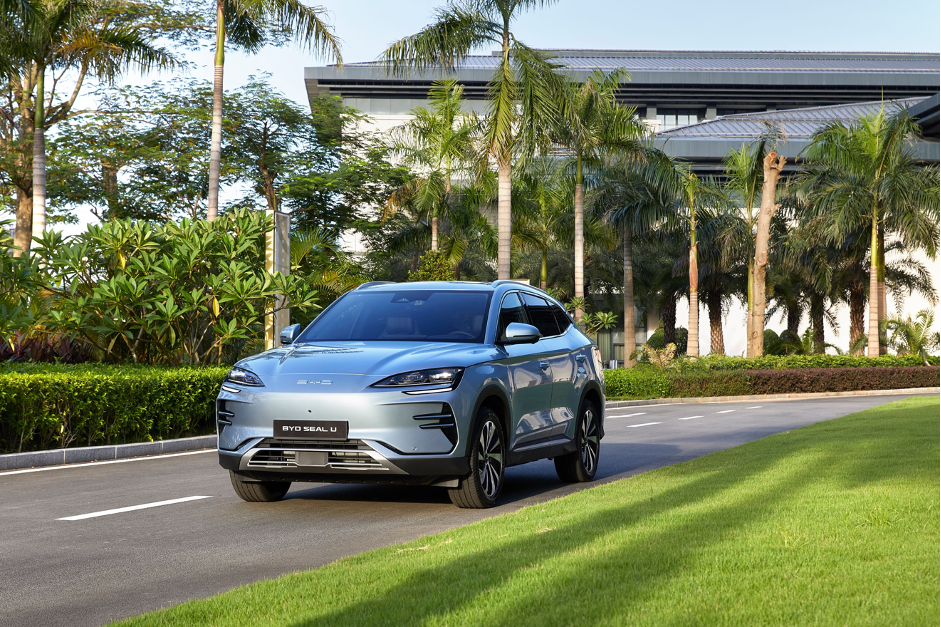BYD Seal U: Stylish Challenger or Just Another EV SUV?

Launched in the European market in 2024, the BYD Seal U positions itself as the Chinese automaker’s new family electric SUV, aiming to compete with benchmarks like the Tesla Model Y. Positioned between the Atto 3 and Tang in BYD’s lineup, this model focuses on a blend of comfort, generous equipment, and refined finishes. But behind these strengths, how does it fare against well-established rivals? Here’s our take after testing this globally ambitious SUV.
Dimensions and Exterior Design: A Commanding Silhouette
Measuring 4.79 meters long, 1.89 meters wide, and 1.67 meters tall, the Seal U stands out with its generous proportions, close to those of the Model Y. Its 2.77-meter wheelbase promises a spacious cabin, while its imposing silhouette—marked by elongated overhangs and a 21 cm increase in height compared to the Seal sedan—gives it undeniable road presence. The front end adopts the Seal’s U-shaped LED headlights, but the rear features a unique design with taillights inspired by « water droplets, » a hallmark of BYD’s « Ocean Aesthetics » philosophy. The 19-inch alloy wheels and panoramic roof contribute to a cohesive, albeit visually restrained, exterior.

Interior Design and Ergonomics: Premium Quality, Limited Modularity
Inside, the Seal U impresses with high-quality materials, blending synthetic leather, soft-touch surfaces, and metallic finishes that rival European premium brands. The Design trim adds a 15.6-inch rotating central screen (versus 12.8 inches for the Comfort trim), a head-up display, and an Infinity Hi-Fi system. The heated and ventilated front seats offer good comfort, though the passenger seat lacks height adjustment.

The rear space, thanks to a flat floor and adjustable seatbacks, accommodates three adults comfortably, but the 552-liter trunk (1,440 liters with seats folded) suffers from narrow wheel arch intrusions. The absence of a frunk and clever storage solutions (only a shallow underfloor compartment for the charging cable) limits practicality compared to rivals like the Skoda Enyaq.

Powertrains and Range: Two Battery Options
The Seal U offers two configurations:
- Comfort: A 218 hp (160 kW) motor with 310 Nm of torque, paired with a 71.8 kWh LFP Blade battery for a 420 km WLTP range.
- Design: The same motor, tuned to 330 Nm, paired with an 87 kWh battery, boosting range to 500 km WLTP.
While performance remains modest (0-100 km/h in 9.3s and 9.6s, respectively), real-world consumption during our test averaged 18–22 kWh/100 km depending on driving conditions—a respectable figure but far from the Model Y’s 15.7 kWh/100 km efficiency.
Driving Experience: Urban Comfort, Highway Limitations
In urban settings, the Seal U shines with its maneuverability: light steering, 360° cameras for parking, and an 11-meter turning radius. The suspension soaks up road imperfections effortlessly, and sound insulation is effective, though wind noise becomes noticeable at higher speeds.
However, on winding roads or highways, its hefty weight (2,020–2,147 kg) and imprecise front-end dynamics lead to understeer and a lack of agility. The two-level regenerative braking feels too subtle for one-pedal driving, and the limited DC charging power (115 kW for Comfort, 140 kW for Design) extends charging times: 43 minutes for a 10–80% top-up on a fast charger.

Comparison with Competitors: Strengths and Compromises
Against the Tesla Model Y, the Seal U stands out with its finish and standard equipment (panoramic roof, ventilated seats, V2L). However, it lags in space, performance, and efficiency. The Skoda Enyaq offers a larger trunk and a more established service network, while the Renault Scenic E-Tech boasts a lower price and longer range. The Seal U thus positions itself as a balanced option between comfort, quality, and pricing, without surpassing rivals in any single category.
Pricing in Belgium: A Bold Positioning
In Belgium, the Seal U starts at €42,000 for the Comfort trim and €45,000 for the Design trim—close to the Model Y’s €43,000 entry point but justified by generous standard features and an extended warranty (6 years/150,000 km). The challenge lies in BYD’s fledgling European network competing with Tesla’s or Skoda’s ecosystems.
Conclusion: Pros and Cons
Pros:
- Premium build quality and finishes.
- Smooth suspension and urban sound insulation.
- Generous equipment (panoramic roof, heated/ventilated seats, V2L).
- Long warranty coverage.
Cons:
- Clumsy road handling and high energy consumption.
- Slow DC charging and limited trunk versatility.
- No frunk or passenger seat height adjustment.
The BYD Seal U emerges as a compelling option for families prioritizing comfort and equipment in an electric SUV. However, its dynamic shortcomings and premium pricing make it best suited for buyers valuing refinement over performance or efficiency.
